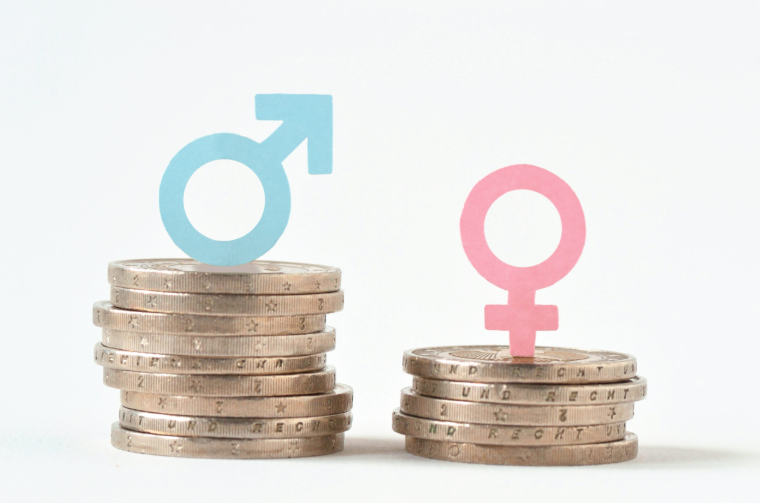Closing the Gap: Advancing Equal Pay for Equal Work in India
Social Issues Social Inequalities and exclusionPosted by NewAdmin on 2025-01-28 05:10:23 |
Share: Facebook | Twitter | Whatsapp | Linkedin Visits: 13

Gender pay disparity remains a pressing issue in India, despite legal provisions and progress in various domains. While the principle of equal pay for equal work is enshrined in Indian law, the reality often tells a different story. Bridging this divide requires a comprehensive understanding of its roots, challenges, and effective solutions.
The gender pay gap reflects the unequal earnings between men and women performing similar roles or work. In India, this disparity persists across industries and experience levels, underlining systemic inequalities. Reports indicate that Indian women earn approximately 34% less than men for comparable work. The issue is exacerbated at higher levels of management, with senior female professionals earning significantly less than their male counterparts. On average, women in leadership roles earn ₹85 for every ₹100 earned by men, highlighting the widening gap as women climb the organizational ladder.
Several factors contribute to this inequity. Workplace discrimination and unconscious bias play a major role, influencing hiring decisions, salary negotiations, and career advancements. Women are also disproportionately represented in lower-paying industries such as caregiving and hospitality, while men dominate higher-paying sectors like technology and finance. Furthermore, limited representation of women in leadership positions restricts their influence in driving fair compensation practices.
Despite the existence of the Equal Remuneration Act of 1976, weak enforcement mechanisms and inadequate penalties often allow non-compliance to go unchecked. Cultural norms that perceive men as primary earners and women as secondary contributors further entrench this disparity. A lack of transparency in salary data and pay structures also hinders efforts to identify and address wage inequities.
Efforts to close the pay gap are gaining momentum. Organizations are introducing diversity and inclusion programs to promote equitable hiring, retention, and advancement. Measures such as unconscious bias training, mentorship initiatives, and flexible work policies are fostering more inclusive workplaces. Advocacy groups are pushing for legislative reforms to strengthen safeguards against wage discrimination and ensure greater transparency.
Bridging the pay gap is not just a moral imperative; it is essential for economic growth and social progress. Equal pay boosts workplace morale, enhances productivity, and reduces poverty. Strategies like pay transparency, unbiased recruitment policies, and empowerment programs are vital to achieving equity. Empowering women through education, skill development, and leadership opportunities is key to dismantling systemic barriers.
Achieving equal pay for equal work demands collective action from governments, businesses, and individuals. By prioritizing pay equity, fostering inclusivity, and holding institutions accountable, India can move toward a fairer, more prosperous future for all its citizens.
Search
Categories
- Sports
- Business
- History
- Politics
- International
- Science & Technology
- Social Issues
- Disaster Management
- Current Affairs
- Education
- Startup Business
- Startup News
- Awards
- Community Services
- Fundraising Events
- Volunteer Services
- Health Initiatives
- Innovations and Initiatives
- In News
- dummybanners
- Awards
- Partners
- Products
- Press Releases
- News
- Fast Check
- South
- సినిమా
- Gallery
- Sunday Chronicle
- Hyderabad Chronicle
- లైఫ్ స్టైల్
- National
- క్రైం
- ట్రెండింగ్
- జాబ్స్
- అంతర్జాతీయo
- బిజినెస్
- రాజకీయం
- బిజినెస్
- సంపాదకీయం
- నవ్య
- చిత్ర జ్యోతి
- క్రీడలు
- జాతీయం
- తెలంగాణ
- తాజా వార్తలు
- మన పార్టీ
- మన నాయకత్వం
- మన విజయాలు
- డౌన్లోడ్స్
- మీడియా వనరులు
- కార్యకర్తలు
- North East Skill Center News
- Government Schemes
- Entrepreneurship Support
- Employment Opportunities
- Skill Training Programs
- Departments
- Investments
- Initiatives
- Resources
- Telangana IT Parks
- Events & Jobs
- Press Releases
- News
- Airport News
- Newtons Laws of Motion
- Karbonn in Business
- Investments in Karbonn
- Company quarterly sales
- Markets
- Auto News
- Industry
- Money
- Advertisements
- Stock target
- Company Updates
- Stock Market
- Company Sales
- Staffing and HR
- Constituency Assembly
- General News
- Srikalahasti Temple
- Bojjala Sudhir Reddy
- Technology & Innovation
- Sports
- Business
- Products
- Industries
- Services & Trainings
- Tools & Resources
- Technology Integration
- Drug Seizures & Arrests
- Telangana Narcotics
- Law & Enforcement
- Rehabilitation
- Nationwide Drug Policing
- Nigeria Seizures
- Global Operations
- Drug Awareness
- Drug Enforcement Tech
- NCB Drug Seizures
- Judicial Crackdown
- India's Surveillance Tools
- Cross-Border Links
- Women Safety
- Cyber Crimes
- Drug Abuse
- Traffic & Road Safety
- Community Connect
- Public Safety Alerts
- Citizen Assistance
- Nellore City News
- Politics & Administration
- Events & Festivals
- Agriculture & Rural
- Business & Economy
- Health & Wellness
Recent News
- Putin Playbook: The Art of Declaring Stability
- Capital Gains Subject to Same Tax Rates Even with Section 87A Rebate
- Star Indian Fast Bowler Ruled Out Of Duleep Trophy Due To A Shoulder Injury
- The Ongoing Battle Against Seles Disease
- TPCC chief announces plan for party committee formation, initiates 'vote chori' campaign
- Devendra Fadnavis on Mental Health, Patriotism, and Responsible Freedom
- CM Fadnavis Advocates For 'Balance' In Deciding Stray Dog, Kabootarkhana Issues
- BMC Polls Likely In October, November Or December, EC Will Take Final Call: CM Fadnavis